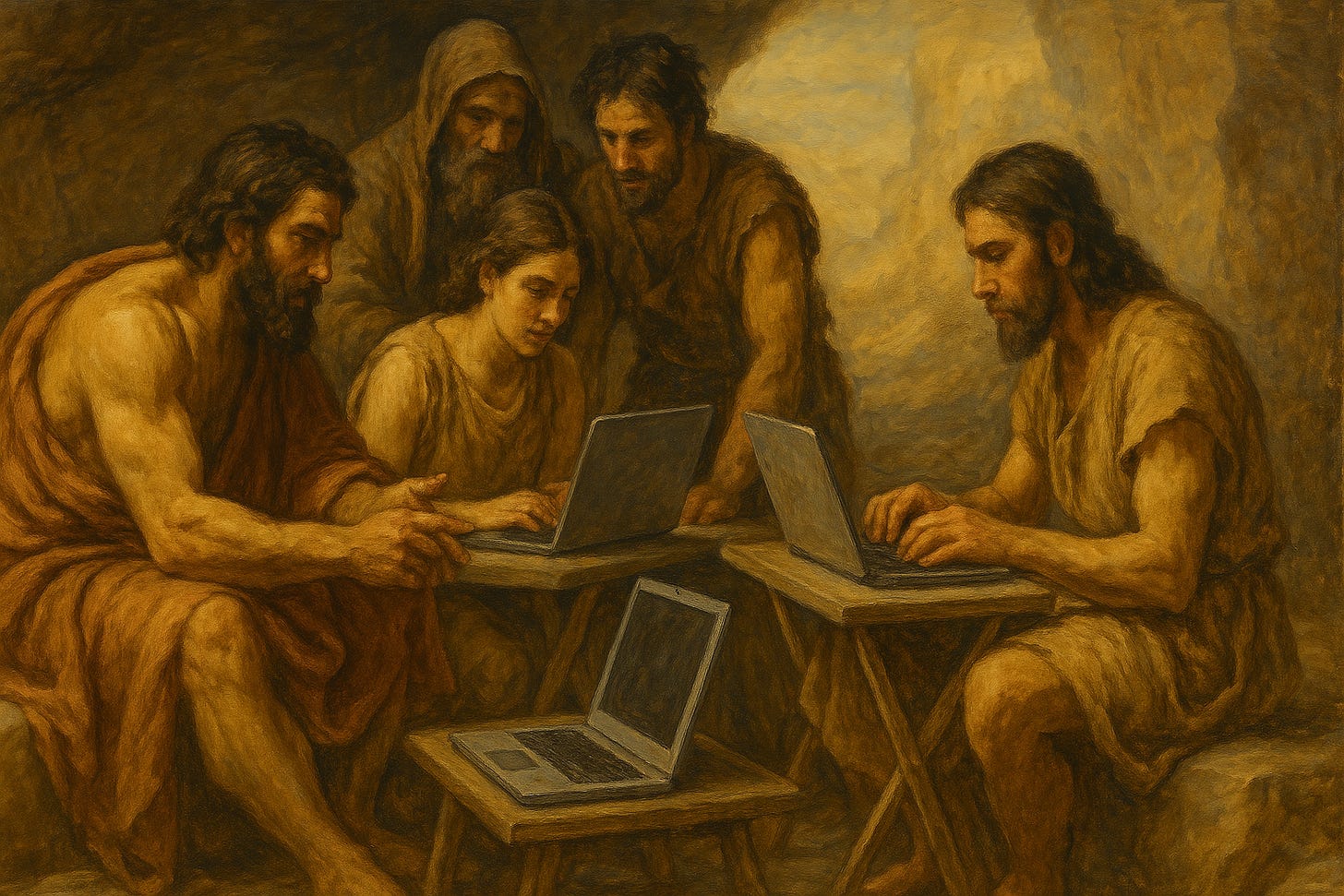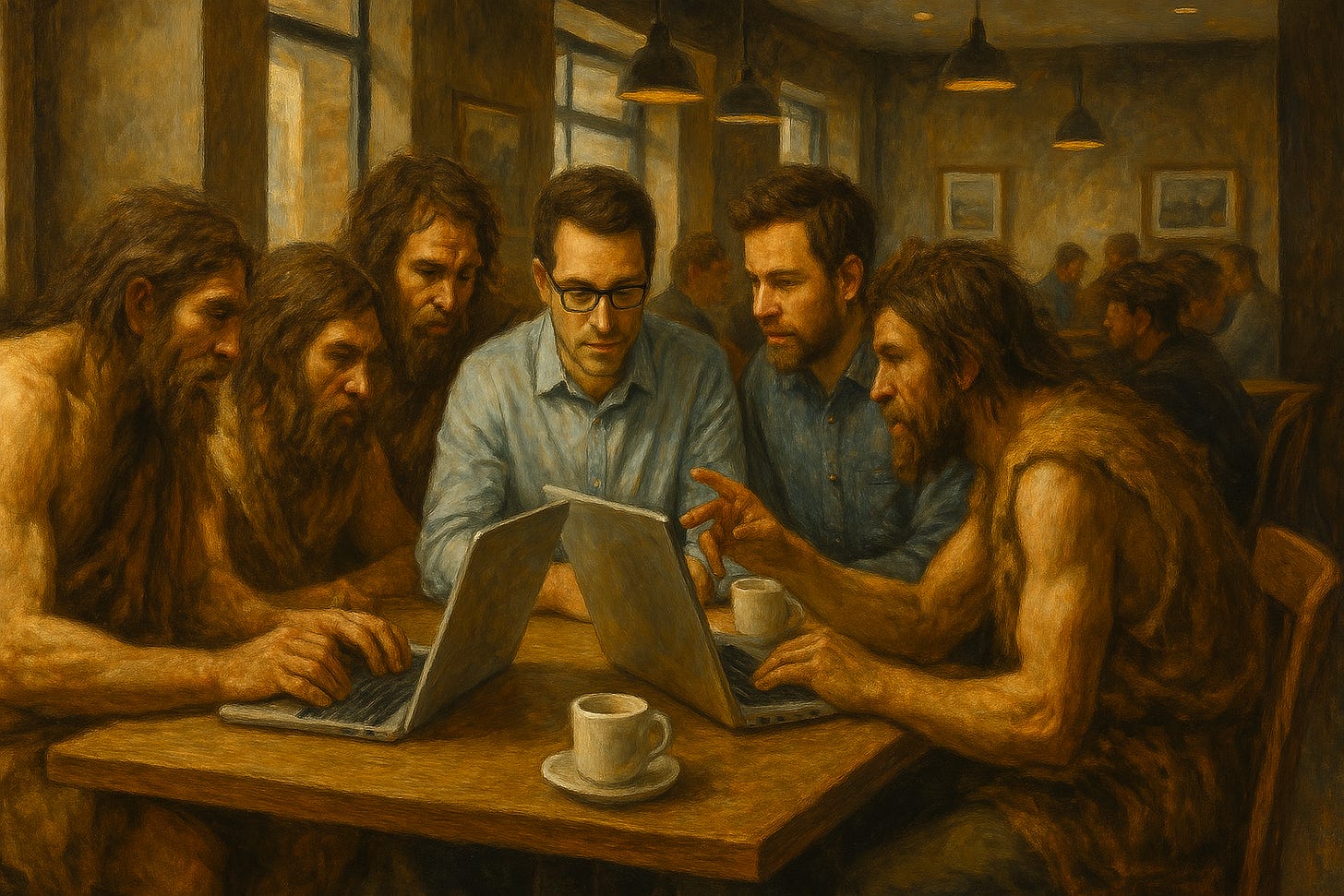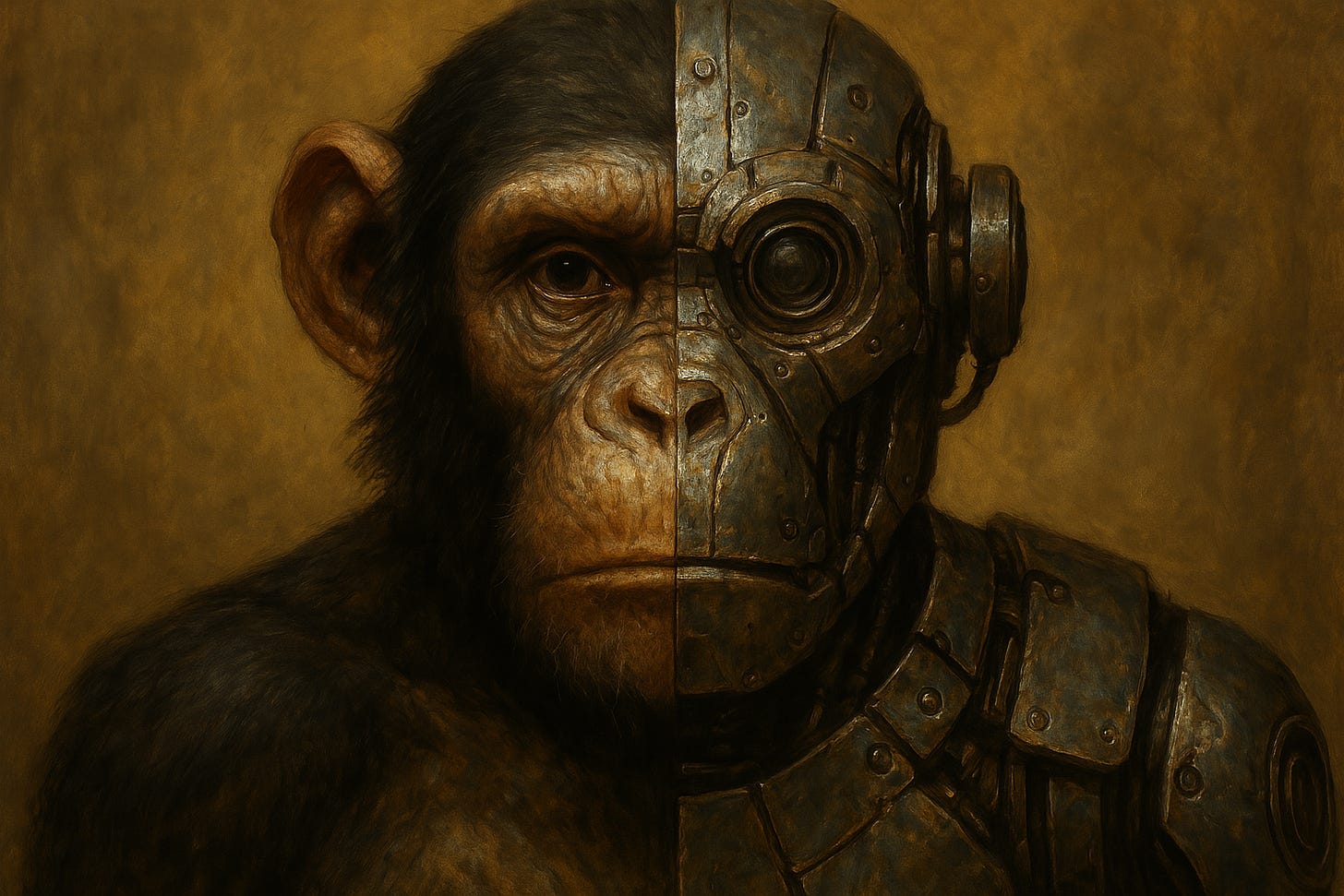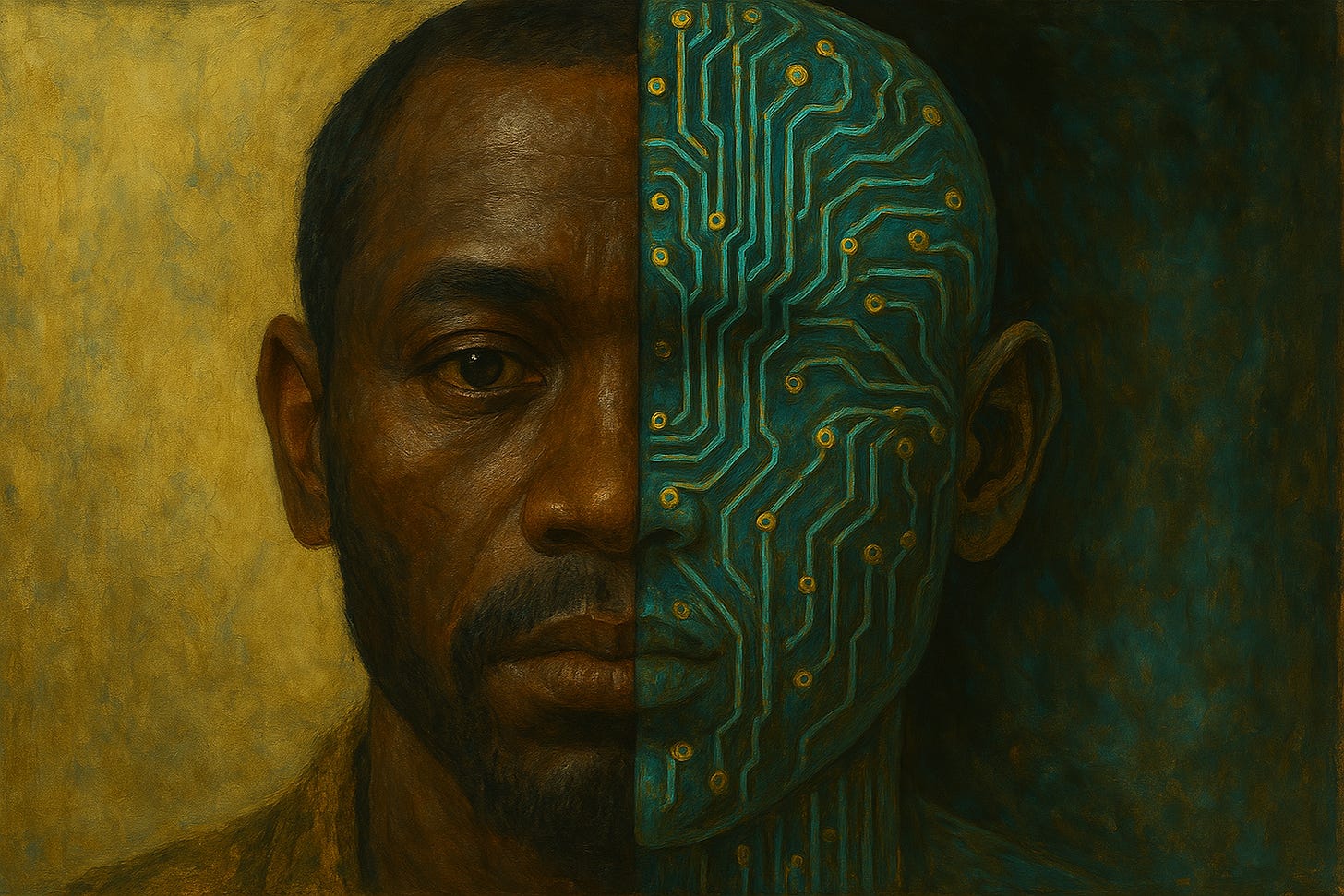All Multi-Hyphenates Now
Why your “side hustle” might be a startup and vice versa
There used to be a clear ditch between being a freelancer and being a founder; one billed by the hour, the other pitching to investors. One working solo with clients, the other building teams and chasing a market-fit product. But as we dig deeper into the tech-rich, remote-friendly, AI-powered 2020s, those distinctions are melting faster than ice cream on a sunny day in Lagos.
Today, a freelancer might be launching products, growing an audience, and selling digital products. Meanwhile, a founder could be building an MVP solo on weekends while picking up freelance gigs to keep the lights on. And here’s the kicker, they’re often using the exact same tools to do it.
Over the last few years, tools once accessible to organizations have become accessible to pretty much anyone with a laptop and a café Wi-Fi password. Platforms like Notion, Webflow, Framer, and Bubble now let individuals create, design websites, and automate workflows without needing to know a single line of code.
Adding to the frying pan, mix the flambé of AI tools like ChatGPT, DeepSeek, and Copilot, and suddenly, one person can do what previously took a team. Seating on my couch today, I can ideate, build, launch, test, and even market a product in a short period. This tech-enabled individual isn’t just a freelancer anymore they’re operating like a one-person startup.
The Freelancer With Founder Energy
Freelancers today are not just showing up, sending invoices, and crossing their legs while sipping coffee in a café. They’re morphing like humans on a full moon. That means shifting from transactional to strategic, from delivering services to building systems, audiences, and leverage. These days, it’s said you pay for value, not necessarily time.
Take the classic freelance designer like Ovie. A few years ago, Ovie might’ve focused solely on client work: a logo here, a landing page there. Now? Ovie might be Selling Figma kits, teaching micro-courses on Skillshare, building a personal brand on LinkedIn or X, or Creating his own product to automate parts of his daily workflow.
This isn’t just freelancing anymore. That’s startup behavior: testing the market, building, and creating revenue streams that don’t rely on hours worked.
So what has changed? Tools and mindset.
Today’s freelancers have access to low-code/no-code platforms that let them build and ship ideas at lightning speed. They're using tools like Notion, Webflow, Canva, ChatGPT, and Airtable to package their knowledge into sellable products. They’re running newsletters, capturing emails, and learning the basics of funnels and conversion rates. They know their brand voice, their niche, and their ideal customer, terms that were once exclusive to startup circles.
And most importantly, they’re moving away from a “do the work, get paid” model to a “build once, earn forever” approach. Whether through digital products, communities, or retainer-based services, freelancers are waking up to the power of compounding effort.
They’re not just chasing gigs anymore; they’re designing businesses.
Assembling the Avengers… on Fiverr
Founders are no longer building companies like they used to. The traditional model of raising a seed round, hiring a full-time team, and renting an office is being replaced by a leaner and surprisingly flexible strategy: collaborator-first building.
Take Alice, today’s founder, who didn’t start her content marketing agency for brands with a full team; she started on Google Workspace. Need a brand? She could hit up a designer on X like Ovie. Growth strategy? There’s probably a newsletter guy on LinkedIn who does just that and, while at it, manages her Influencer community. It’s not uncommon these days for a founder like Lawretta to build her entire MVP using contractors scattered across four time zones, most of whom she has probably never met in person.
What may have started as a workaround for limited funds has now become a strategy. Freelancers offer the speed, precision, and adaptability most early teams simply can’t afford (literally or operationally). Instead of waiting one month to hire a full-time engineer, a Lawretter can ship the first version of a product in three weeks with a solid freelance developer. And if things don’t work out? No messy exits. No HR paperwork. Just… unbook the Calendly link, send a virtual handshake, and drop a goodbye emoji.
But it’s deeper than just the piggybank. Founders today are treating freelancers not as side characters but as strategic collaborators. They’re letting them co-create and build long-term relationships with them across multiple projects. Some freelancers become go-to guys; others become actual co-founders down the line.
And yes, the irony is now a paradox: while many freelancers are acting more like founders, many founders are now building companies like freelancers; fluid, project-based, and tool-rich.
The result? One that’s more about assembling temporary teams, like the Avengers, rather than building traditional hierarchies. One where Slack replaces the Monday morning meeting. One where the best person for the job might be in Nairobi or X.
So, no, founders aren’t just hiring like freelancers. They’re thinking like them too: lean, fast, global, and allergic to red tape.
And maybe this is not just a temporary hack. Maybe it’s the future of building, period.
Tech Is the Real Co-Founder
Let’s be honest: most of us are collaborating more with someone who never sleeps, never complains, and doesn’t need equity. And for what it’s worth, they might just be the most reliable member of the team. You already know who I’m talking about.
A recent report by McKinsey estimates that AI could automate up to 29% of work hours by 20301. Whether you’re a freelancer scaling up or a founder trying to get something off the ground fast, today’s tools are doing the heavy lifting that once required full teams with years of experience. You can brainstorm with ChatGPT, prototype in Figma, automate onboarding with Zapier, and track analytics with Google Looker, all before lunch.
This isn’t just support anymore. It’s collaboration. Founders now “talk to” AI the same way they would a teammate:
“You’re CEO for a day, your only goal: make work fun without tanking productivity. What’s your first move?”
And AI delivers. In seconds.
Freelancers? Same deal. They’re using AI tools as creative partners, editors, and data analysts. And they’re doing it without ever needing to send a calendar invite. We’re entering an era where one person, with the right tool stack, can run circles around what used to take a team.
And the tools just keep getting smarter. You’re not working alone anymore. You’re working with a silent partner that’s helping you go from idea to execution in a bolt. So yes, maybe your co-founder doesn’t have a LinkedIn profile. Maybe they sound suspiciously robotic. But without them these days, You’re not shipping that MVP by Friday.
How to Make Tech Your Co-Founder (Without Splitting Equity)
Today’s tools are actively building with us. So, if you’ve ever caught yourself wishing for a capable, tireless teammate... this guide is for you.
Step 1: State the job Description. Don’t just throw tech at problems define the role. What do you need help with? Design? Brainstorming? Admin? Identify the job description like you're hiring a human.
Step 2: Assemble your (digital) team. Use ChatGPT for ideas, Figma for design, Webflow for builds, and Zapier for automation. Think of it like building the Avengers.
Step 3: Treat your tools like teammates. Give them context. Be specific. They perform better when they know the mission.
Step 4: Think Smarter. Let the tech handle the grunt work. Automate form responses and emails, and free up your brain for actual thinking.
Step 5: Build Fast, test ideas, break stuff (on purpose). Use your stack to run quick experiments, learn, and iterate no committee is required to vote.
Final reoccurring step: Update or Die. Tech evolves. So should you. Stay curious, test new tools, and keep your stack fresh. Your co-founder might get an upgrade next week.
Final Thought: Pick All the Hats
While I was tasking my “designer” at 3 a.m. to whip up visuals for this article, the truth hit me like the classic Nigerian TV show "Tales by Moonlight":
You don’t need a team of 5 to get started. With the right tech stack, you’re already halfway to building something great. So next time you catch yourself thinking,
“I need a teammate…”,
Instead, ask:
“Can I automate one?”
At least, You won’t have to buy boxes of pizza to keep them motivated.
Chui, M., Manyika, J., & Miremadi, M. (2023). The economic potential of generative AI: The next productivity frontier. McKinsey Global Institute. https://www.mckinsey.com/mgi/overview/in-the-news/the-economic-potential-of-generative-ai






